Tag: inflammation
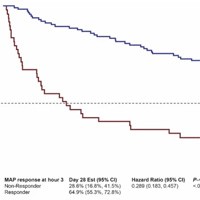
Broad Spectrum Vasopressors
We propose the notion of "broad spectrum vasopressors" wherein patients with septic shock are started on multiple vasopressors with a different mechanism of action simultaneously while the vasopressor sensitivity is assessed.... read more

Pathological Inflammation in Patients with COVID-19
The COVID-19 pandemic caused by infection with SARS-CoV-2 has led to more than 200,000 deaths worldwide. Several studies have now established that the hyperinflammatory response induced by SARS-CoV-2 is a major cause of disease... read more

Is COVID-19 ARDS?
Acute respiratory distress syndrome (ARDS) is a heterogeneous disease. It presents with a wide range of severity, varying degrees of hypoxemia and varying degrees of pulmonary mechanical impairment. Failure of hypoxemic vasoconstriction... read more
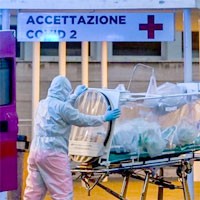
An Interview With an Italian Intensivist on the COVID Experience in Italy
The current COVID-19 crisis has a huge human impact. Clearly cardiovascular issues have a central role in management and, unfortunately, in adverse outcomes. We are continually struggling to understand risks and management... read more
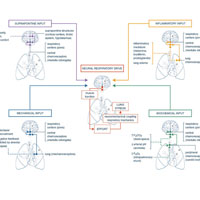
Respiratory Drive in the ARDS: Pathophysiology, Monitoring, and Therapeutic Interventions
Neural respiratory drive, i.e., the activity of respiratory centres controlling breathing, is an overlooked physiologic variable which affects the pathophysiology and the clinical outcome of acute respiratory distress syndrome... read more
Which Component of Mechanical Power is Most Important in Causing VILI?
Repeated applications of tidal energy inflict lung damage (VILI) when stress and strain exceed the limits of tissue tolerance. Inflation work and energy are the products of pressure and volume, which are loosely associated... read more
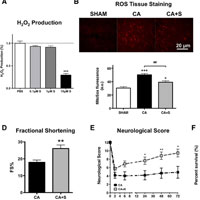
Potential Therapy for Improving Sudden Cardiac Arrest Resuscitation Outcomes
The severity of cardiogenic shock following asystolic cardiac arrest is dependent on the length of cardiac arrest prior to cardiopulmonary resuscitation and is mediated by myocardial stunning resulting from mitochondrial... read more
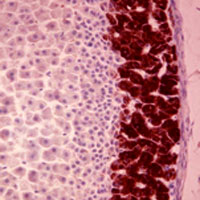
Aldosterone Synthase in Peripheral Sensory Neurons Contributes to Mechanical Hypersensitivity during Local Inflammation in Rats
Local production of aldosterone by its processing enzyme aldosterone synthase within peripheral sensory neurons contributes to ongoing mechanical hypersensitivity during local inflammation via intrinsic activation of neuronal... read more

Time to Recognition of Sepsis in the Emergency Department Using Electronic Health Record Data
Systemic inflammatory response syndrome and Sequential Organ Failure Assessment initially identified distinct populations. Using systemic inflammatory response syndrome resulted in earlier electronic health record sepsis... read more

Enteral Nutrition Can Be Given to Patients on Vasopressors
Most all recent studies show Enteral Nutrition (EN) can be delivered safely to patients on vasopressors. In fact, many studies show an outcome benefit of early EN (EEN) in ICU patients who are receiving vasopressors. It... read more

Serum Protein Changes in Pediatric Sepsis Patients Identified with an Aptamer-Based Multiplexed Proteomic Approach
The serum protein changes identified with the aptamer-based multiplexed proteomics approach used in this study can be useful to distinguish between sepsis and noninfectious systemic inflammation. A cohort of 40 children... read more
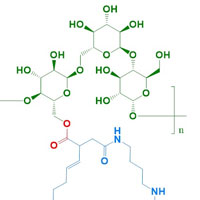
Endogenous Agmatine Metabolism Correlated with the Progression of Sepsis
Supplemental exogenous agmatine could ameliorate the lipopolysaccharide-induced systemic inflammatory responses and multiple organ injuries through the 2 receptor">imidazoline I2 receptor-ribosomal S6 kinase 2-nuclear factor-κB... read more
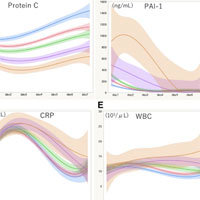
Correlation Among Endothelial Injury, Organ Dysfunction, and Several Biomarkers in Sepsis Patients
Protein C was superior for the prediction of organ dysfunction after 7 days of ICU treatment when compared with other biomarkers of endothelial function, inflammation, and coagulation. C-reactive protein (CRP) and white blood... read more

Abnormalities in the Host Immune Response During Hospitalization for Sepsis
In this cohort study of 483 patients who survived hospitalization with sepsis at 12 US hospitals, 25.8% had elevated high-sensitivity C-reactive protein levels (a marker of inflammation) at 3 months, 30.2% at 6 months, and... read more




